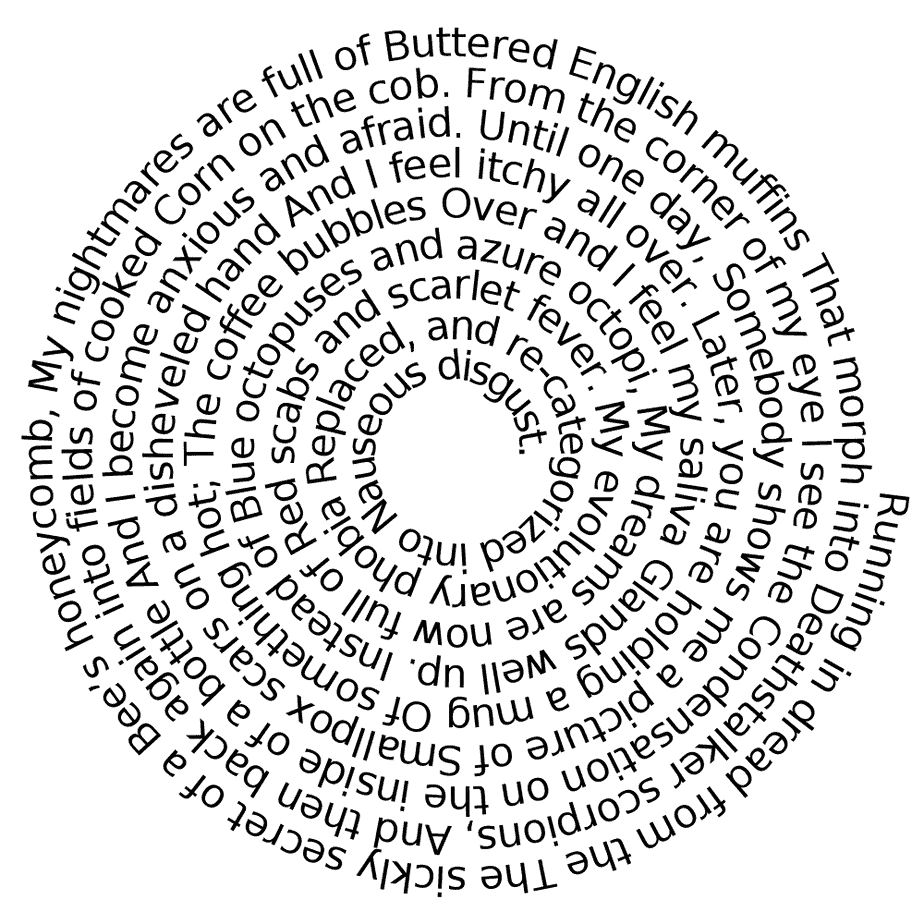Running in dread from the
The sickly secret of a
Bee’s honeycomb,
My nightmares are full of
Buttered English muffins
That morph into
Deathstalker scorpions,
And then back again into fields of cooked
Corn on the cob.
From the corner of my eye I see the
Condensation on the inside of a bottle
And I become anxious and afraid.
Until one day,
Somebody shows me a picture of
Smallpox scars on a disheveled hand
And I feel itchy all over.
Later, you are holding a mug
Of something hot;
The coffee bubbles
Over and I feel my saliva
Glands well up.
Instead of
Blue octopuses and azure octopi,
My dreams are now full of
Red scabs and scarlet fever.
My evolutionary phobia
Replaced, and re-categorized into
Nauseous disgust.
This is a shape poem, inspired by recent research into trypophobia (the fear of irregular patterns or clusters of small holes or bumps), and how this may, in fact, be a response linked to parasites and infectious disease.
Previous explanations into trypophobia have focused on the evolutionary response to warning signs in nature; for example, the cluster of circles that appear on some poisonous animals like the blue-ringed octopus and the king cobra snake. As such trypophobia has been associated with intense fear.
This new research proposes a new theory: that trypophobia is instead a feeling of disgust in relation to clusters of small holes or bumps, and that it likely arises from an evolutionary response to parasites and infectious diseases. When people suffering from trypophobia were shown images of clusters relating to diseased body parts (e.g. circular rash marks on a chest and a cluster of ticks), their responses to these images matched responses that are normally associated with disgust. Their responses to other non-disease-relevant images (e.g. drilled holes in a brick wall, a lotus flower seed pod) also elicited similar responses, leading researchers to propose a new theory about trypophobia being linked to disgust rather than fear, and that most likely this resulted from the prevalence of round shapes in infectious diseases and marks caused by the infestation of parasites.
An audio version of the poem can be heard here.
The shape of this poem was created using a tool provided by Festisite.
Discover more from The Poetry of Science
Subscribe to get the latest posts sent to your email.
